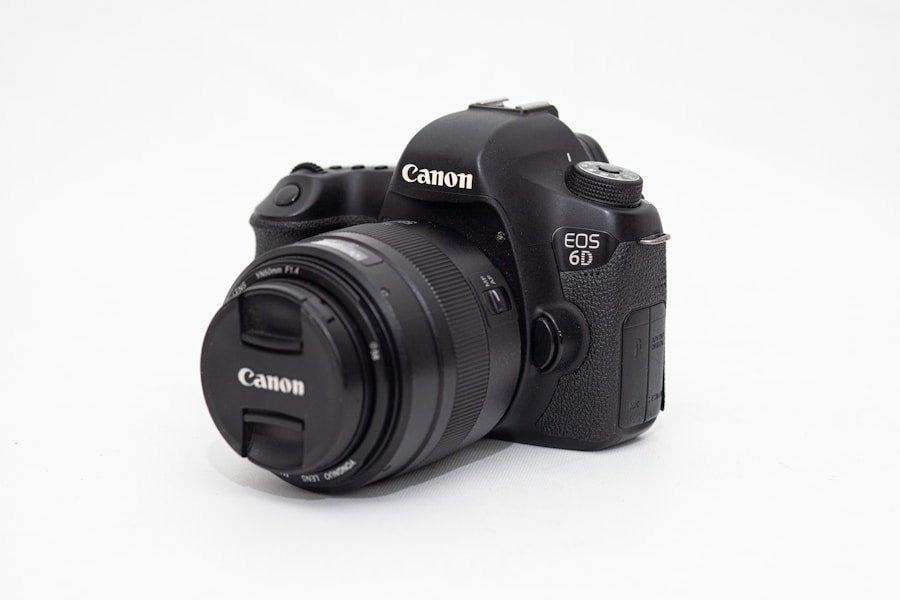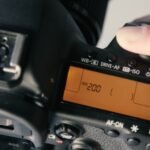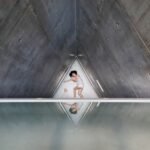When it comes to photography, the camera body is the most essential tool in a photographer’s arsenal. There are a wide variety of camera bodies available on the market, each with its own unique features and capabilities. When choosing the right camera body for the job, it’s important to consider factors such as resolution, sensor size, and shooting speed. For professional photographers, a full-frame camera body with a high resolution sensor is often the best choice for capturing detailed and high-quality images. On the other hand, for amateur photographers or those on a budget, a crop sensor camera body may be a more practical option. Additionally, the shooting speed of a camera body is crucial for capturing fast-moving subjects, such as sports or wildlife photography. It’s important to carefully consider these factors and choose a camera body that best suits your specific needs and shooting style.
In addition to resolution, sensor size, and shooting speed, it’s also important to consider the ergonomics and user interface of a camera body. A comfortable and intuitive design can greatly enhance the shooting experience and make it easier to capture great photos. Some camera bodies also offer advanced features such as in-body image stabilization, weather sealing, and customizable controls, which can be valuable for certain types of photography. Ultimately, the right camera body for the job will depend on your individual needs and preferences as a photographer. Whether you’re shooting landscapes, portraits, or action-packed events, choosing the right camera body is essential for capturing stunning and impactful images.
Lenses: The Key to Capturing the Perfect Shot
While the camera body is an important tool for photography, the lens is equally crucial for capturing the perfect shot. Lenses come in a variety of focal lengths and apertures, each with its own unique characteristics and capabilities. When choosing a lens, it’s important to consider factors such as focal length, aperture, and image stabilization. For example, a wide-angle lens is ideal for capturing expansive landscapes or architecture, while a telephoto lens is perfect for bringing distant subjects closer and capturing details from a distance. Additionally, the aperture of a lens plays a key role in controlling depth of field and low-light performance. A lens with a wide maximum aperture, such as f/1.4 or f/2.8, is great for creating a shallow depth of field and capturing sharp images in low-light conditions.
In addition to focal length and aperture, image stabilization is an important feature to consider when choosing a lens. Image stabilization helps reduce camera shake and allows for sharper images when shooting handheld or in low-light situations. Some lenses also offer advanced features such as weather sealing, fast and silent autofocus motors, and specialized coatings for improved image quality. Ultimately, the right lens for the job will depend on the specific type of photography you’re interested in pursuing. Whether you’re shooting portraits, landscapes, or wildlife, choosing the right lens is essential for capturing stunning and impactful images.
Lighting Equipment: Enhancing Your Photos in Any Setting
Lighting is one of the most important elements in photography, and having the right lighting equipment can greatly enhance the quality of your photos in any setting. There are a variety of lighting options available to photographers, including natural light, artificial light sources such as strobes and continuous lights, and light modifiers such as reflectors and diffusers. When shooting outdoors or in natural light, it’s important to pay attention to the direction and quality of light in order to create flattering and dynamic images. In situations where natural light is limited or unavailable, artificial lighting can be used to create a specific mood or highlight certain aspects of a scene.
In addition to light sources, light modifiers play a crucial role in shaping and controlling light in photography. Reflectors can be used to bounce light onto a subject or fill in shadows, while diffusers can soften harsh light and create a more flattering look. Additionally, using colored gels or grids can add creative effects to your images and help you achieve a specific look or style. Whether you’re shooting portraits, still life, or landscapes, having the right lighting equipment and knowing how to use it effectively can greatly enhance the quality of your photos in any setting.
Tripods and Monopods: Stabilizing Your Shots for Clarity
When it comes to capturing clear and sharp images, having a stable support system is essential. Tripods and monopods are invaluable tools for stabilizing your shots and ensuring that your photos are free from camera shake and motion blur. Tripods are three-legged stands that provide a stable base for your camera, while monopods are single-legged supports that offer greater mobility and flexibility. Both tripods and monopods come in a variety of sizes and materials, each with its own unique features and capabilities.
When choosing a tripod or monopod, it’s important to consider factors such as weight capacity, height range, and portability. For photographers who shoot in challenging environments or require maximum stability, a sturdy tripod with a high weight capacity is essential. On the other hand, for photographers who are constantly on the move or need to travel light, a compact and lightweight tripod or monopod may be more practical. Additionally, some tripods offer advanced features such as adjustable legs, quick-release plates, and built-in leveling systems, which can greatly enhance their usability and convenience. Whether you’re shooting landscapes, architecture, or long exposure photography, having a stable support system is essential for capturing clear and sharp images.
Memory Cards and Storage: Ensuring You Never Miss a Moment
In today’s digital age, having reliable memory cards and storage solutions is essential for ensuring that you never miss a moment. Memory cards come in a variety of formats and capacities, each with its own unique features and capabilities. When choosing a memory card, it’s important to consider factors such as read and write speeds, capacity, and reliability. For photographers who shoot high-resolution images or 4K video, a memory card with fast read and write speeds is essential for capturing and transferring large files quickly and efficiently.
In addition to memory cards, having a reliable storage solution is crucial for backing up and organizing your photos. External hard drives, solid-state drives (SSDs), and cloud storage services are all popular options for storing and backing up your images. When choosing a storage solution, it’s important to consider factors such as capacity, speed, and reliability. For photographers who shoot large volumes of images or require maximum performance, investing in a high-capacity SSD or fast external hard drive may be the best option. Additionally, using cloud storage services can provide an extra layer of security and accessibility for your photos. Whether you’re shooting professionally or as a hobbyist, having reliable memory cards and storage solutions is essential for ensuring that you never miss a moment.
Camera Bags and Cases: Protecting Your Gear on the Go
When it comes to transporting and protecting your valuable photography gear, having a reliable camera bag or case is essential. Camera bags come in a variety of styles and sizes, each designed to accommodate different types of gear and shooting situations. When choosing a camera bag or case, it’s important to consider factors such as capacity, comfort, and protection. For photographers who carry multiple cameras, lenses, and accessories, a spacious backpack or roller bag with padded compartments may be the best option for safely transporting their gear.
In addition to capacity and protection, comfort is an important factor to consider when choosing a camera bag or case. Carrying heavy gear for extended periods of time can be physically demanding, so having a comfortable and ergonomic design is crucial for reducing strain and fatigue. Some camera bags also offer advanced features such as adjustable dividers, weatherproof materials, and customizable carrying options, which can greatly enhance their usability and convenience. Whether you’re shooting on location or traveling internationally, having a reliable camera bag or case is essential for protecting your gear on the go.
Accessories: Enhancing Your Photography Experience
In addition to camera bodies, lenses, lighting equipment, tripods, memory cards, storage solutions, and camera bags or cases, there are a variety of accessories available that can greatly enhance your photography experience. From filters and lens hoods to remote triggers and cleaning kits, these accessories can help you achieve specific looks or styles while also maintaining your gear in top condition.
Filters are popular accessories that can be used to enhance colors or reduce glare in your images. UV filters can also protect your lenses from scratches or dust particles while shooting outdoors. Lens hoods are another essential accessory that can help reduce lens flare while also providing protection from accidental bumps or knocks.
Remote triggers are useful accessories that allow you to trigger your camera shutter without physically touching it. This can be particularly useful when shooting long exposures or self-portraits where you want to avoid any camera shake.
Cleaning kits are essential accessories that help you maintain your gear in top condition by removing dust particles or smudges from your lenses or camera sensors.
Ultimately, these accessories can greatly enhance your photography experience by providing additional creative options while also ensuring that your gear remains in top condition for years to come.
In conclusion, choosing the right camera body is essential for capturing stunning images that meet your specific needs as a photographer. Lenses play an equally crucial role in achieving the perfect shot by providing different focal lengths and apertures that suit various types of photography. Lighting equipment enhances photos in any setting by providing natural or artificial light sources along with modifiers that shape light according to your needs.
Tripods and monopods stabilize shots for clarity by providing stable support systems that eliminate camera shake while memory cards ensure you never miss any moment by providing reliable storage solutions that back up your photos securely.
Camera bags protect your gear on the go by providing reliable transportation options while accessories enhance your photography experience by providing additional creative options while also ensuring that your gear remains in top condition for years to come.
Camera bags protect your gear on the go by providing reliable transportation options while accessories enhance your photography experience by providing additional creative options while also ensuring that your gear remains in top condition for years to come. Whether you’re traveling to a remote location or just heading out for a day of shooting, a camera bag will keep your equipment safe and organized. Meanwhile, accessories such as lens filters, tripods, and external flashes can help you capture unique and stunning images, while also protecting your valuable gear from damage. Together, camera bags and accessories are essential tools for any photographer looking to take their craft to the next level.








